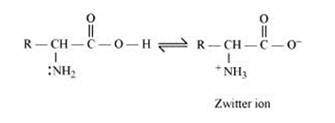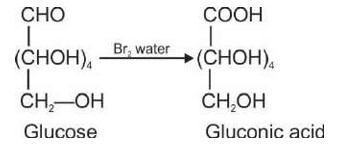14.24 How do you explain the amphoteric behaviour of amino acids?
14.24 How do you explain the amphoteric behaviour of amino acids?
-
1 Answer
-
14.24
Amino acids contain an acidic (carboxyl group) and a basic (amino) group within the same molecule. In aqueous solution, they neutralize each other. The carboxyl group loses a proton while the amino group accepts it. S a result, a dipolar or zwitter-ion is formed.

In zwitter ionic form, the amino acid show amphoteric behaviour as they react with both acids and bases. In the acidic medium, COO- ion of the zwitter-ion accepts a proton to form the cation first, while in the basic medium, +NH3 ion loses a proton to form the anion, as shown below:-
 Thus, amino acids show amphoteric behaviour.
Thus, amino acids show amphoteric behaviour.
Similar Questions for you
Insulin is a globular proteins.
Ionisation enthalpy increases in a period. Z dominates over screening effect (s) in a period as Zeff. increases.
Kindly go through the solution
Histidine is an essential amino acid
Lactose is a disaccharide which is formed by forming C? -C? glycosidic linkage between D-galactose and D- glucose.
Lactose - (Hydrolysis)-> D - galactose + D - glucose
Taking an Exam? Selecting a College?
Get authentic answers from experts, students and alumni that you won't find anywhere else
Sign Up on ShikshaOn Shiksha, get access to
- 65k Colleges
- 1.2k Exams
- 679k Reviews
- 1800k Answers

